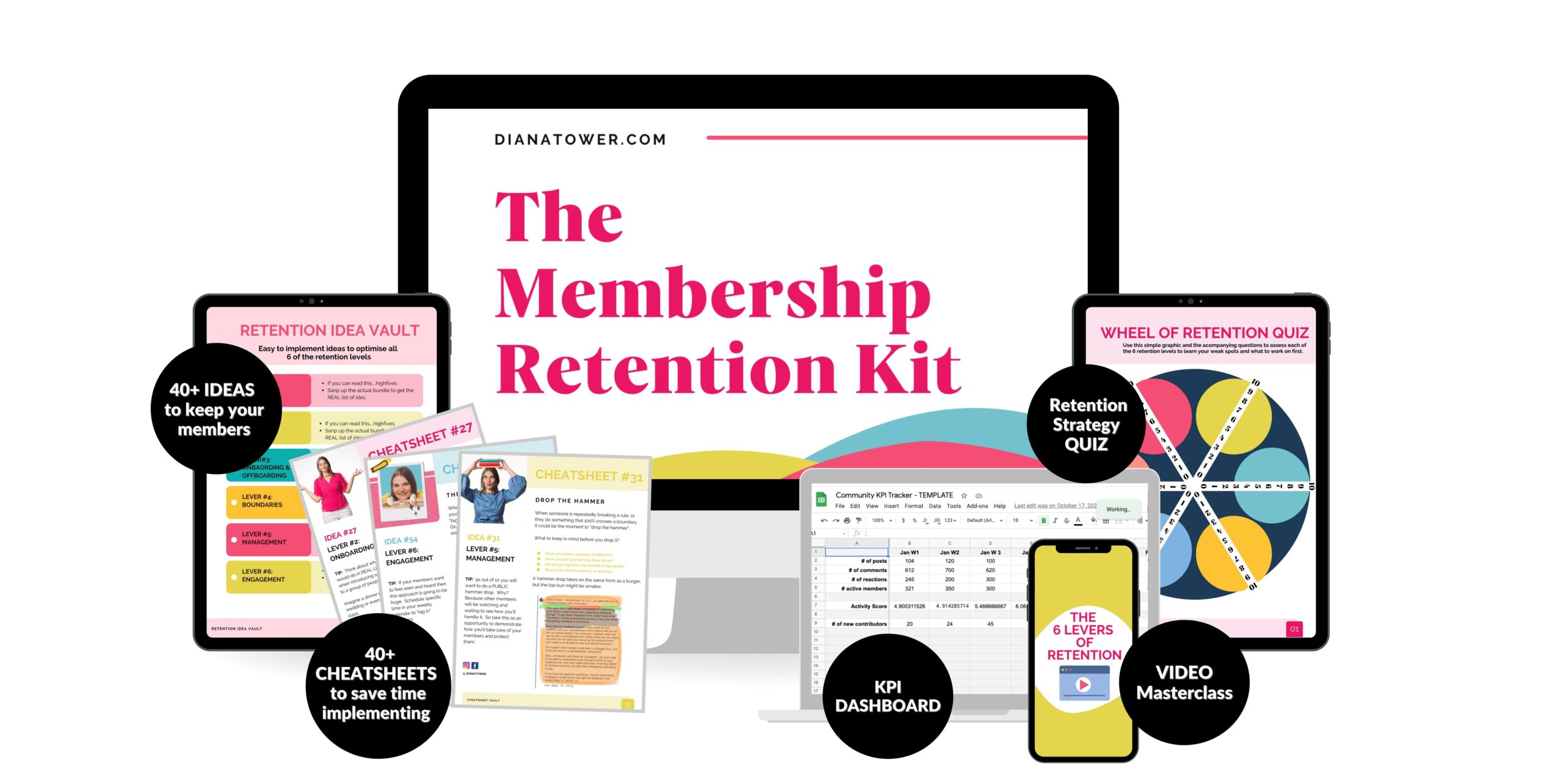Chapter 3 —
Does size really matter?
So many entrepreneurs have a complex when it comes to community, and it boils down to size.
Picture it. You launch a program for the first time and you get fewer buyers than you anticipated. What does that mean for your community? Is it even worth having a community for so few people?
What about 3 people?
That’s what happened for Primoz Bozic when he launch his program, “Insider’s Club”. He wanted to teach entrepreneurs how to connect and build relationships with influencers and so he created a course with a group coaching aspect.
When his cart closed he had 3 students join…including myself. Here’s how he felt
“I did feel disappointed because I wanted to have more people in the course. I wanted to make sure I got amazing success stories, case studies and testimonials and also to help a lot of people. In that way it was disappointing, but in the end it turned out to be really awesome because we could really build relationships, connect and get awesome results. Not to mention that people actually showed up to calls.”
So what about you? What would you do if only 3 people bought? That’s what we’re going to roll our sleeves up and dig into right now.
First and foremost, size does NOT matter…if you’re worried someone is going to see your teeny group, point and laugh; don’t. If anything, small groups are an asset. That’s right buttercup.
When you have a small group of students it’s much easier to see who is active and progressing through your course, and who might be stuck.
With a simple spreadsheet you can check in with your students on a consistent basis, weekly or even daily if you want to go really above and beyond.
I created a system that allows me to reach out to 50 students a day (over 500 students every month). You can grab your free community member check-in spreadsheet here.
BONUS MATERIAL: Grab your copy of the community member check-in spreadsheet
I'll also send you BOTH my ultimate guides (and bonus offer spreadsheets and systems) to help you engage the members in your online community.
Small groups can also be the perfect place to test the first version of your course. I mean…that’s why they invented beta courses right?
Keeping things smaller allows you to deliver much more hands on support for each member and at the same time, allows you to gain much more knowledge about why your course is or is not helping your students.
How to manage a smaller community of under 50 members?
 I already alluded to this above, but having a system in place so you can consistently support your students and track your interactions with them is a HUGE win for all.
I already alluded to this above, but having a system in place so you can consistently support your students and track your interactions with them is a HUGE win for all.
Want to know what I do? Of course you do. 😉
Most of the communities I run are on Facebook, and I get all my data and numbers quickly and easily from Grytics.
There is this AWESOME feature where you can create different “members” lists. These include active members, past members, lurkers and current members. The last one is what I use on a regular basis, as it shows me who is in the group.
Why don’t I just create a spreadsheet myself?
I could…but what Grytics does as well is automatically adds a direct link to the person’s FB profile in the sheet and additional information about their interactions in the group. This is awesome as I can simply click the link, and open up messenger to connect and check in with each student.
So in terms of “managing” a smaller community, I would recommend using this spreadsheet system to check in on your students on a regular basis which you decide on. It could be daily, weekly or even twice a day; it all depends on you.
If you community isn’t on Facebook or you don’t have Grytics, I made that free spreadsheet template that you can snap up and use yourself.
In terms of engaging a smaller community you might think it will be less engaged due to the size, but size really doesn’t matter. As long as you are providing a community…a safe space for your students to come together and get what they want (support, answers, connection with other peeps just like them) and avoid what they don’t want (noise, self-promotional A-holes etc) then your group will be bumpin’.
We’ll get to the specific tactics for HOW to engage your group (of any size) in chapter 14.
Does anything change with groups from 50-500?
You might think that a bigger group requires a different approach but be it 3, 15, 50, 100 or 500 the action you take will be very similar.
You see…the size of your community should not dictate the amount of time you spend in it.
Let me say that again,
The size of your community should NOT dictate the amount of time and energy you spend in it, working on it, managing it etc.
Wait Diana…what about those free groups that have 30,000 members and the hosts had to hire moderators and invest boat loads of time and money into “managing” them?
Oh right. Those groups. Those free groups that we aren’t covering in this guide and that I don’t recommend you create in the first place? Haha
I know what you’re saying, but if you set up your community correctly…your members will respect your clear guidelines, your minions will help you engage your group without even being asked to, and you’ll continue to focus on what is important…providing top notch support for your students.
One thing to mention though. How you deliver a white-glove experience for your members will change between a group of 10 and a group of 500, but not in the way that you might think.
When using my outreach system the only thing that will change is the frequency of you checking in. With 10 students you’ll easily be able to check in weekly (if not daily) while with 500 students you’ll be able to do so on a 3 week basis (this is what I do for Ramit Sethi’s Accelerator program currently).
If the thought of doing that much outreach and support still makes you want to mash your face against your keyboard, you’re probably better off hiring a community manager.
Someone who lives and breathes community, that enjoys connecting with people and who knows your course inside and out so they can become a second pair of hands for you…your golden minion.
What should I keep in mind when engaging a group of over 1,000?
If your course community is pushing past 1k or even dangerously close to 10k, the main thing to maintain your sanity is to enforce your guidelines…always.
You might think that “letting things go” isn’t a big deal, but it can have a domino effect that transforms you from happy host to pissed off policer. That’s right.
You’ll be policing your community left, right and center.
- Veiled self-promotion
- More “noise” posts that add little or NO value to the community.
- Shitty questions that provide no context
- Etc
Don’t go down this slippery slope. Create your guidelines from the get-go, NEVER waver from them and you’ll enjoy a community that polices itself and adds value to your students.
Now of course, not everyone knows all of this when they set up a community so perhaps you have an existing community that is kind of a shit-show.

What should you do? To put it simply…you need to take action and be the authority figure that your community needs.
It’s like parenting. Your kid does NOT need or want another friend. They need someone to set boundaries and enforce them. It makes them feel safe and also helps them behave properly. So go MOM the shit out of your community. It might get a bit worse before it get’s better but it will be worth it. So do it!
Keep Reading...




